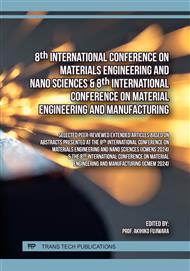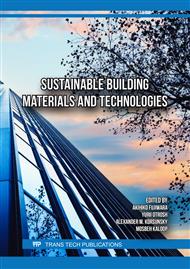p.3
p.11
p.17
p.25
p.33
p.45
p.53
p.61
Experimental and Numerical Study on the Blast Resistant Performance of Geopolymer Concrete
Abstract:
Geopolymer, with its notable benefit of low carbon dioxide emissions, holds the potential to substantially curtail environmental pollution. According to the existing related research on geopolymer materials, it is obvious that it has great development potential in many engineering application fields, and it is a new generation of green and environmentally friendly recycled materials. Nowadays, there is a growing concern regarding explosion protection. Explosions near buildings can cause catastrophic damages on the building external and internal structure, and the most important thing is that can cause injuries and loss of life to the occupants of these buildings. This study investigates the mechanical performance of the fiber-reinforced geopolymer concrete under explosive testing. Furthermore, the finite element analysis models have been established through LS-DYNA software to simulate the explosive testing using Structure-Arbitrary Lagrangian Eulerian Method (S-ALE). The model is used to assess the dynamic mechanical behavior of geopolymer materials.
Info:
Periodical:
Pages:
25-32
Citation:
Online since:
August 2024
Keywords:
Price:
Сopyright:
© 2024 Trans Tech Publications Ltd. All Rights Reserved
Share:
Citation:



